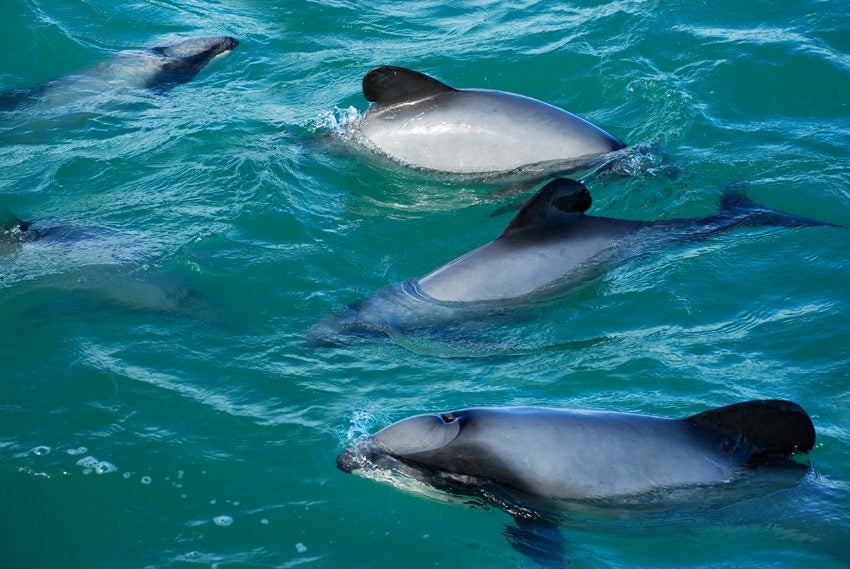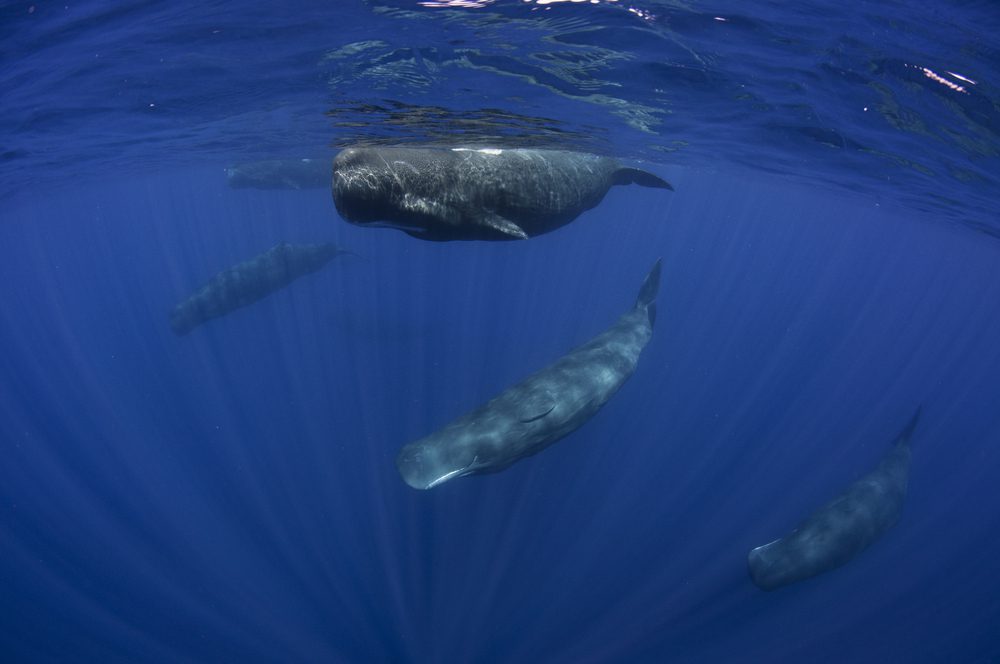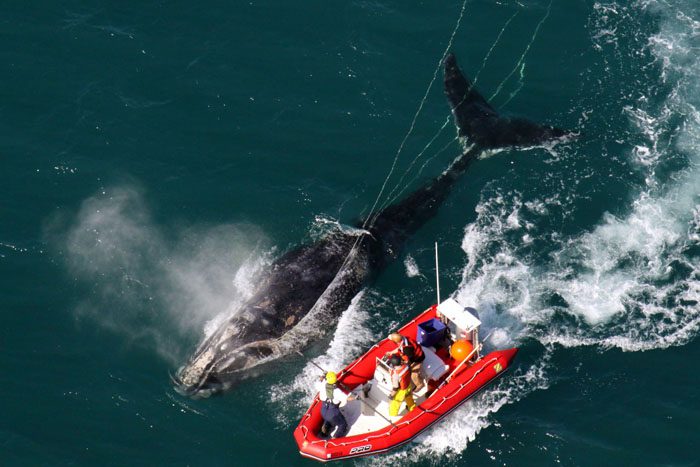February 13, 2016
Unintended Targets: Why These Whales and Dolphins Are Being Pushed to the Edge of Extinction
BY: Allison Guy
It’s been decades since a near-global ban on commercial whaling, but hundreds of thousands of whales, dolphins, and porpoises are still dying as accidental casualties of fishing gear. According to one estimate, more than 300,000 of these animals are killed every year in the world’s fisheries, drowning in nets set for fish, snagged on hooks, or starving after getting entangled in abandoned fishing gear. Today is World Whale Day, so in the spirit of awareness, learn about three endangered cetaceans that are disappearing due to irresponsible fishing practices — and what we can do to help.
Hector’s dolphin
Each year, 100 to 150 of the remaining 7,200 Hector’s dolphins (Cephalorhynchus hectori) are killed in gillnets, and to a lesser extent, in fishing trawls. Found only in New Zealand’s coastal areas, they have a unique rounded dorsal fin and a gray body with white and black markings.
The Maui’s dolphin (Cephalorhynchus hectori maui), one of the two subspecies of the Hector’s dolphin, is the smallest and rarest marine dolphin — fewer than 55 remain, with only about 10 mature females left.
 Photo credit: Geof Wilson, Creative Commons “>
Photo credit: Geof Wilson, Creative Commons “>
The major culprit behind these dolphins’ disappearance is gillnets set to capture fish. Sometimes called “walls of death,” gillnets can be up to 50 miles (80 kilometers) long and have among the highest bycatch rates of any type of fishing gear.
In California, for instance, the drift and set gillnet industries discard over 60 percent of all the animals they catch. Gillnets more than a mile long are so dangerous to marine wildlife that the United Nations has banned their use on the high seas.
The New Zealand government ramped up its restrictions on gillnets in 2012 and 2013, but 75 percent of Maui’s dolphin habitat still remains unprotected.
Mediterranean sperm whale
Less than 2,500 Mediterranean sperm whales — genetically distinct from other sperm whales (Physeter macrocephalus) — are left in the Mediterranean Sea. The biggest threat to this endangered population is entanglement in driftnets set for swordfish and tuna.
Like gillnets, driftnets are all but invisible to marine wildlife and may be many miles long. But unlike gillnets, which snag fish by their gills, driftnets capture fish by entangling them as the animals struggle to escape.
 Photo credit: Shutterstock “>
Photo credit: Shutterstock “>
Despite regulations that ban driftnets in the Mediterranean, hundreds of fishing vessels in Italy, France and Morocco exploit legal loopholes that allow them to deploy these nets, or simply ignore the law altogether. Fishing fleets that have received hundreds of thousands of euros in subsidies to switch to less destructive fishing gear and have instead used this money for other purposes.
North Atlantic right whale
There are actually three separate species of right whale, and the North Atlantic Right Whale (Eubalaena glacialis) is critically endangered, with only 300 to 500 animals remaining. Because they are docile, prefer to travel close to coastlines and float when dead, right whales were once a preferred target of whalers. Hunted intensively for centuries, these whales have been protected internationally since 1935.
Eighty years later, their numbers remain perilously low in large part due to entanglement in fishing gear. Over 80 percent of all North Atlantic right whales have scars from becoming entangled in fishing ropes, buoys, or wire traps used to catch lobsters and crabs. The severity of entanglements has been on the rise since the 1990s, as fishing gear switched from natural fibers to stronger, more durable materials like nylon.
 Photo credit: NOAA “>
Photo credit: NOAA “>
Abandoned fishing lines and nets continue to “ghost fish,” ensnaring whales and killing them if they can’t swim to the surface for air. Even if an entangled whale is able to breathe, the discarded lines can cut off circulation to body parts or impair the animal’s ability to feed, swim or reproduce.
Currently, the United States government has rules restricting gillnet use in the areas where right whales go to give birth, as well as certain restrictions on traps and gillnets throughout its range. Rescue organizations in the US and Canada also respond to reports of entangled whales and often can cut them free. But these efforts don’t reach every whale that has a run-in with discarded lines and nets. Mandating the use of more responsible fishing gear — like biodegradable nets or lines strong enough to catch fish but not so strong that a whale can’t break them — would help these critically endangered giants recover.
Oceana works in many countries around the world to cut down on bycatch, end the use of destructive fishing gear and a put a halt to illegal, unreported and unregulated fishing. Donate today to support our work.



